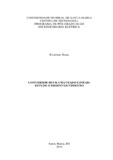| dc.creator | Rosa, Everton | |
| dc.date.accessioned | 2020-03-10T18:07:03Z | |
| dc.date.available | 2020-03-10T18:07:03Z | |
| dc.date.issued | 2019-07-31 | |
| dc.identifier.uri | http://repositorio.ufsm.br/handle/1/19795 | |
| dc.description.abstract | In this dissertation is presented a voltage source converter consisting of a Buck converter and a linear amplifier connected in parallel. This configuration is called as a Switched-Linear converter and the main feature of this converter is that when it is operating in permanent regime, the Buck converter, because it is a less dissipative converter, processes most of the energy, and the Linear amplifier, for having higher frequency band and fast response, regulates and eliminates the voltage oscillations at the output. The benefit of this configuration is that it combines the best features of both switched and linear converters. In addition, the circuit presented in this work can eliminate the need for an output capacitor, reducing filter and elevating the lifespan of the converter. Other features include: fast response to load disturbances (for load step of 100%: stabilization time less than 2.0 μs, risetime less than 100ns), null output voltage ripple, efficiency above 85% and high fidelity and output signal reliability. In this work, an analysis of this converter is also presented, which aims to show a project base form for future studies, presenting in the project methodology the equations of the converter in permanent regime, analysis of the circuits of the Linear amplifier and switched converter, principles that must be observed when connecting the two topologies in parallel and modeling the control to ensure the results. Finalizing with experimental tests and results. | eng |
| dc.language | por | por |
| dc.publisher | Universidade Federal de Santa Maria | por |
| dc.rights | Attribution-NonCommercial-NoDerivatives 4.0 International | * |
| dc.rights.uri | http://creativecommons.org/licenses/by-nc-nd/4.0/ | * |
| dc.subject | Híbrido | por |
| dc.subject | Resposta rápida | por |
| dc.subject | Alta fidelidade | por |
| dc.subject | Conversor | por |
| dc.subject | Chaveado-linear | por |
| dc.subject | Hybrid | eng |
| dc.subject | Fast response | eng |
| dc.subject | High fidelity | eng |
| dc.subject | Converter | eng |
| dc.subject | Switched-lnear | eng |
| dc.title | Conversor buck chaveado-linear: estudo e desenvolvimento | por |
| dc.title.alternative | Switched-linear buck converter: study and development | eng |
| dc.type | Dissertação | por |
| dc.description.resumo | Nesta dissertação é apresentado um conversor fonte de tensão constituído por um conversor Buck e um amplificador linear conectados em paralelo. Esta configuração é denominada como conversor Chaveado-Linear e a característica principal deste conversor é que quando está operando em regime permanente, o conversor Buck, por se tratar de um conversor menos dissipativo, processa a maior parte da energia, e o amplificador linear, por ter banda de frequência maior e resposta rápida, regula e elimina as oscilações de tensão na saída. O benefício desta configuração é que ela combina os melhores recursos de ambos os conversores chaveado e linear. Além disso, o circuito apresentado neste trabalho pode eliminar a necessidade de um capacitor de saída, reduzindo filtro e elevando o tempo de vida útil do conversor. Outras características apresentadas incluem: resposta rápida a distúrbios de carga (para degrau de carga de 100%: tempo de estabilização menor que 2,0μs, tempo de subida menor que 100ns), ondulação de tensão de saída nula, eficiência acima de 85% e alta fidelidade e confiabilidade do sinal de saída. Neste trabalho, também é apresentado uma análise deste conversor que tem como objetivo mostrar uma forma base de projeto para estudos futuros, apresentando na metodologia de projeto o equacionamento do conversor em regime permanente, análise dos circuitos do amplificador linear e do conversor chaveado, princípios que devem ser observados ao conectar as duas topologias em paralelo e a modelagem do controle para garantir os resultados. Finalizando com testes e resultados experimentais. | por |
| dc.contributor.advisor1 | Pinheiro, José Renes | |
| dc.contributor.advisor1Lattes | http://lattes.cnpq.br/2333794966860226 | por |
| dc.contributor.referee1 | Sartori, Hamiltom Confortin | |
| dc.contributor.referee1Lattes | http://lattes.cnpq.br/6722822162374884 | por |
| dc.contributor.referee2 | Tahim, André Pires Nóbrega | |
| dc.contributor.referee2Lattes | http://lattes.cnpq.br/9318574382402732 | por |
| dc.creator.Lattes | http://lattes.cnpq.br/3244789987523469 | por |
| dc.publisher.country | Brasil | por |
| dc.publisher.department | Engenharia Elétrica | por |
| dc.publisher.initials | UFSM | por |
| dc.publisher.program | Programa de Pós-Graduação em Engenharia Elétrica | por |
| dc.subject.cnpq | CNPQ::ENGENHARIAS::ENGENHARIA ELETRICA | por |
| dc.publisher.unidade | Centro de Tecnologia | por |



